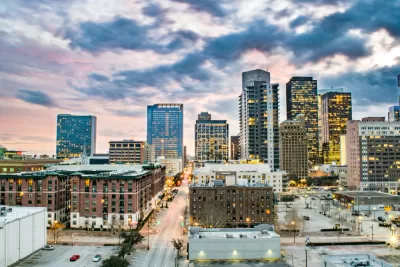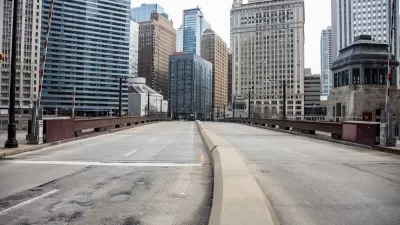Rather than ‘monofunctional’ business districts or urban playgrounds, American downtown districts could become multipurpose neighborhoods.

Writing in Wired, Amit Katwala suggests that the future of the American downtown, which has been by and large designed as “uniquely monofunctional” to serve 9-to-5 business purposes, is in not in attracting tourists with new amenities, but rather by transforming into real neighborhoods where people can live, work, and play.
As Katwala explains, “Strict zoning laws, combined with the widespread leveling of city centers in the 1960s and 1970s to build multilane highways, have created downtowns that are difficult to use for anything other than white-collar work.”
To revitalize struggling downtowns, some cities are reorienting their central business districts as “playground cities,” defined in the article as “downtown areas will be remodeled to attract leisure visitors as well as workers” but that urban scholars like Yonah Freemark warn could be a passing fad.
According to Freemark, “block-wide skyscrapers can also stifle life at ground level,” offering little interaction for pedestrians. “The park space is minimal. Roadways are horrible and extremely car-focused. All those things have to be thrown out if you want to create a neighborhood.”
Katwala writes, “Perhaps the answer to saving downtowns is actually a simple one: Transform them into neighborhoods in their own right that actually cater to the needs of the people who live there.” To start, city leaders can change policy to make it easier to convert offices and other downtown buildings to housing and other uses and reorient transit schedules to reflect post-pandemic ridership patterns.
FULL STORY: To Save Downtowns, Destroy Them

Alabama: Trump Terminates Settlements for Black Communities Harmed By Raw Sewage
Trump deemed the landmark civil rights agreement “illegal DEI and environmental justice policy.”

Planetizen Federal Action Tracker
A weekly monitor of how Trump’s orders and actions are impacting planners and planning in America.

Why Should We Subsidize Public Transportation?
Many public transit agencies face financial stress due to rising costs, declining fare revenue, and declining subsidies. Transit advocates must provide a strong business case for increasing public transit funding.

Understanding Road Diets
An explainer from Momentum highlights the advantages of reducing vehicle lanes in favor of more bike, transit, and pedestrian infrastructure.

New California Law Regulates Warehouse Pollution
A new law tightens building and emissions regulations for large distribution warehouses to mitigate air pollution and traffic in surrounding communities.

Phoenix Announces Opening Date for Light Rail Extension
The South Central extension will connect South Phoenix to downtown and other major hubs starting on June 7.
Urban Design for Planners 1: Software Tools
This six-course series explores essential urban design concepts using open source software and equips planners with the tools they need to participate fully in the urban design process.
Planning for Universal Design
Learn the tools for implementing Universal Design in planning regulations.
Caltrans
Smith Gee Studio
Institute for Housing and Urban Development Studies (IHS)
City of Grandview
Harvard GSD Executive Education
Toledo-Lucas County Plan Commissions
Salt Lake City
NYU Wagner Graduate School of Public Service





























